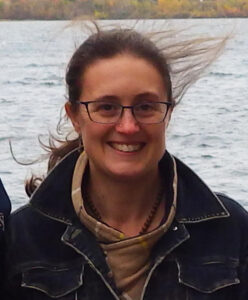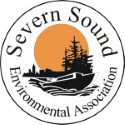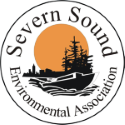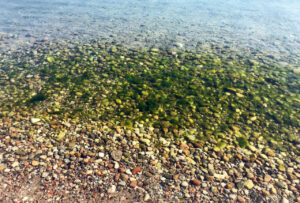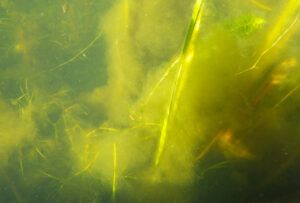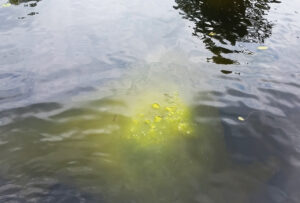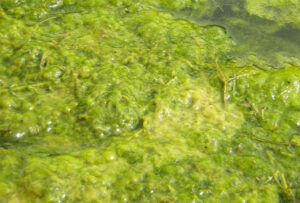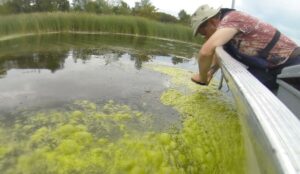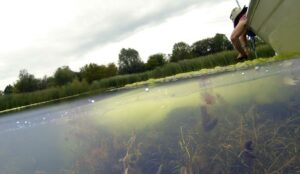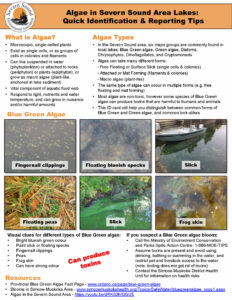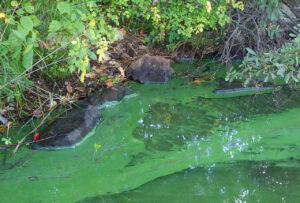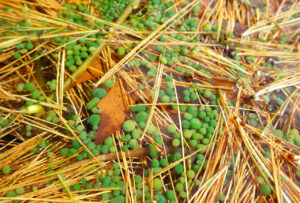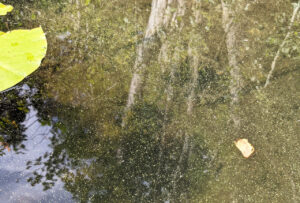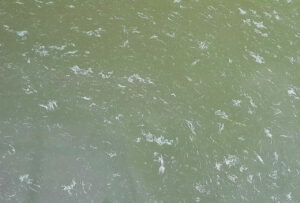All About Algae
Algae (aka phytoplankton) are a very diverse group of eukaryotic, photosynthetic organisms that are vital components of lake food webs. These microscopic plants grow suspended in the water column and can exist as single cells or as groups of cells in colonies and filaments. Through their photosynthesis, they use energy from the sun, carbon dioxide, and water to build sugar molecules that allow for their growth. They are eaten by zooplankton and some fish and are a vital part of lake ecosystems.
The amount of algae can vary throughout the season depending on light, temperature, wind conditions, and availability of nutrients, primarily phosphorus but also nitrogen. There are no specific Remedial Action Plan targets for Severn Sound for algal biomass, however the goal is to have an algae community that indicates moderately enriched conditions in terms of nutrients.
In the Severn Sound area, there is a wide variety of species which can be grouped into 7 major classes: green algae (chlorophytes), diatoms (bacillariophytes), red algae (cryptophytes), blue green algae (cyanophytes or cyanobacteria), dinoflagellates (dinophytes), euglenophytes, and golden algae (chrysophytes). The portion of the algae community that is made up of these different classes as well as the specific species that occur can be used as an indicator of the nutrient status of a lake.
The SSEA monitors algae in Severn Sound and the inland lakes in the surrounding watershed through our Open Water and Inland Lake monitoring programs. You can check out results here.
Examples of filamentous green algae, which is commonly mistaken for a blue green algae bloom.
What is blue-green algae?
Cyanobacteria, or blue-green algae, are naturally occurring microscopic organisms found in freshwater. Under particularly favourable conditions which generally includes warm water temperatures, a pulse of nutrients (e.g. after a storm event), high light levels and calm wind conditions, cyanobacteria can multiply quickly and form algal blooms. Many species of cyanobacteria can produce harmful toxins under the right conditions, posing a risk to human health and aquatic life through skin contact, or ingestion of contaminated drinking water, causing symptoms ranging from minor irritation to more serious illnesses. Not all cyanobacteria species produce toxins, but every bloom should be treated as toxic until known otherwise.
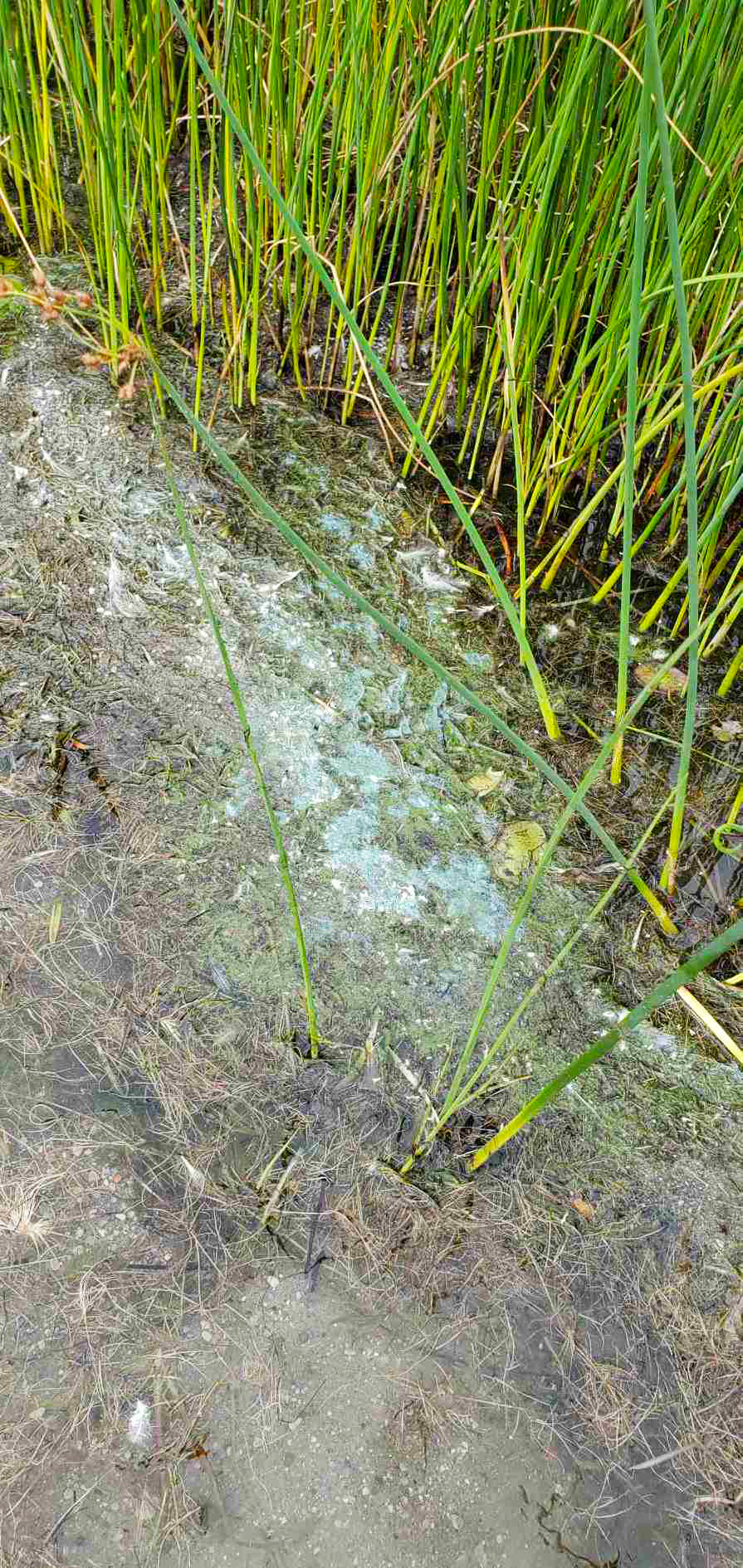
-not all blooms are so distinguishable.
How to recognize blue green algae blooms
Blue-green algae are not normally visible in the water, but populations can rapidly increase to form large masses or scum when conditions are favourable. Blooms most commonly occur in late summer and early fall, however it is becoming more common to see them earlier in the season. They thrive in areas where the water is shallow, slow moving and warm, but they may be present in deeper, cooler water. Cyanobacteria blooms can appear as a blue sheen, scum, or mats on the water’s surface, and may be red, brown, green, yellow or blue in colour. Dense blue-green algal blooms can make the water look like a bluish-green pea soup, or a shiny paint slick. Fresh blooms often smell like fresh cut grass, while older blooms can smell like rotting garbage.
Causes of
algal blooms
There are many causes for algal blooms in freshwaters and it is often difficult to pinpoint specific reasons why a bloom forms. In many cases, a set of unique environmental conditions occur in a waterbody, which can lead to a particular species dominating and triggering a bloom. Conditions such as a pulse of nutrients (phosphorus and nitrogen), warmer temperatures, abundant light, and stable wind conditions, can create suitable environmental conditions for blue-green algal blooms.
Phosphorus and nitrogen are essential to algae production, and these nutrients encourage the growth of algae in waterbodies. Phosphorus is the key nutrient limiting algal growth in the majority of lakes in the Severn Sound watershed. Increased concentrations of nutrients often lead to increased algal production, and increased risk of a bloom forming. This process of nutrient enrichment in a waterbody is called eutrophication, which can be exacerbated by human influences such as agricultural and stormwater runoff, poorly functioning septic systems, and shoreline development. Increasingly across Ontario however, blooms are occurring in lakes with minimal or no human influence. Increasing water temperatures and shortening of the ice cover period due to climate change are suspected to be key factors in this rise in bloom occurrence.
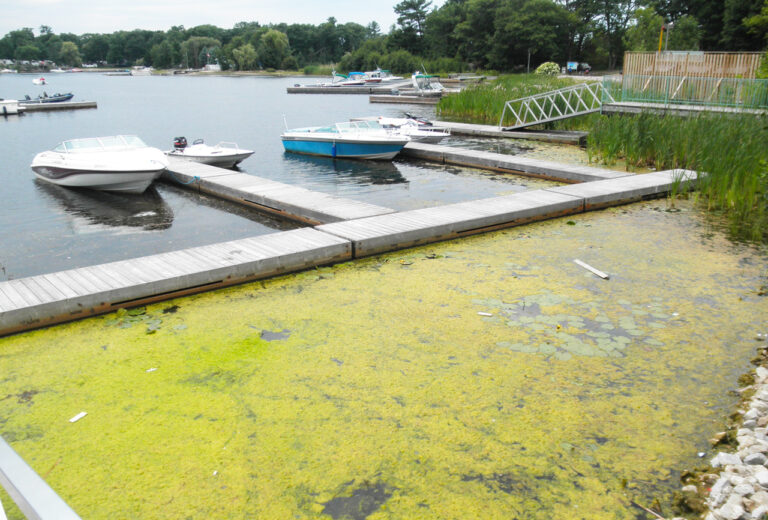
for excessive growth of filamentous green algae
What should I do if I spot blue-green algae?
If you spot what you think might be a blue-green algal bloom, be cautious and assume that toxins are present. Avoid all exposure to blue-green algae including using, drinking, bathing or swimming in the water, and restrict pet and livestock access to the water. Check local advisories and the active blooms listed on the Simcoe Muskoka District Health Unit Algae Page before visiting a body of water.
If you have been in contaminated water, wash with soap and water or rinse thoroughly with clean water to remove algae. If symptoms such as skin, eye or throat irritation, allergic reactions or breathing difficulties occur after contact with water, contact your health care provider. Contact the Simcoe Muskoka District Health Unit for information on health risks.
If you spot a bloom, contact the Ministry of Environment Conservation and Parks (MECP) Spills Action Centre. Incidents can be reported online or by phone 1-866-MOETIPS, (TTY:1-855-889-5775). The MECP will gather information, conduct field visits, as necessary, and facilitate testing to confirm if a bloom is present.
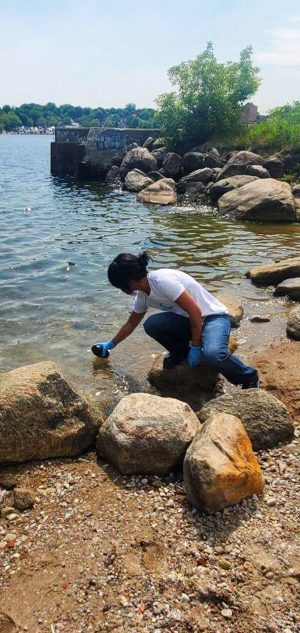
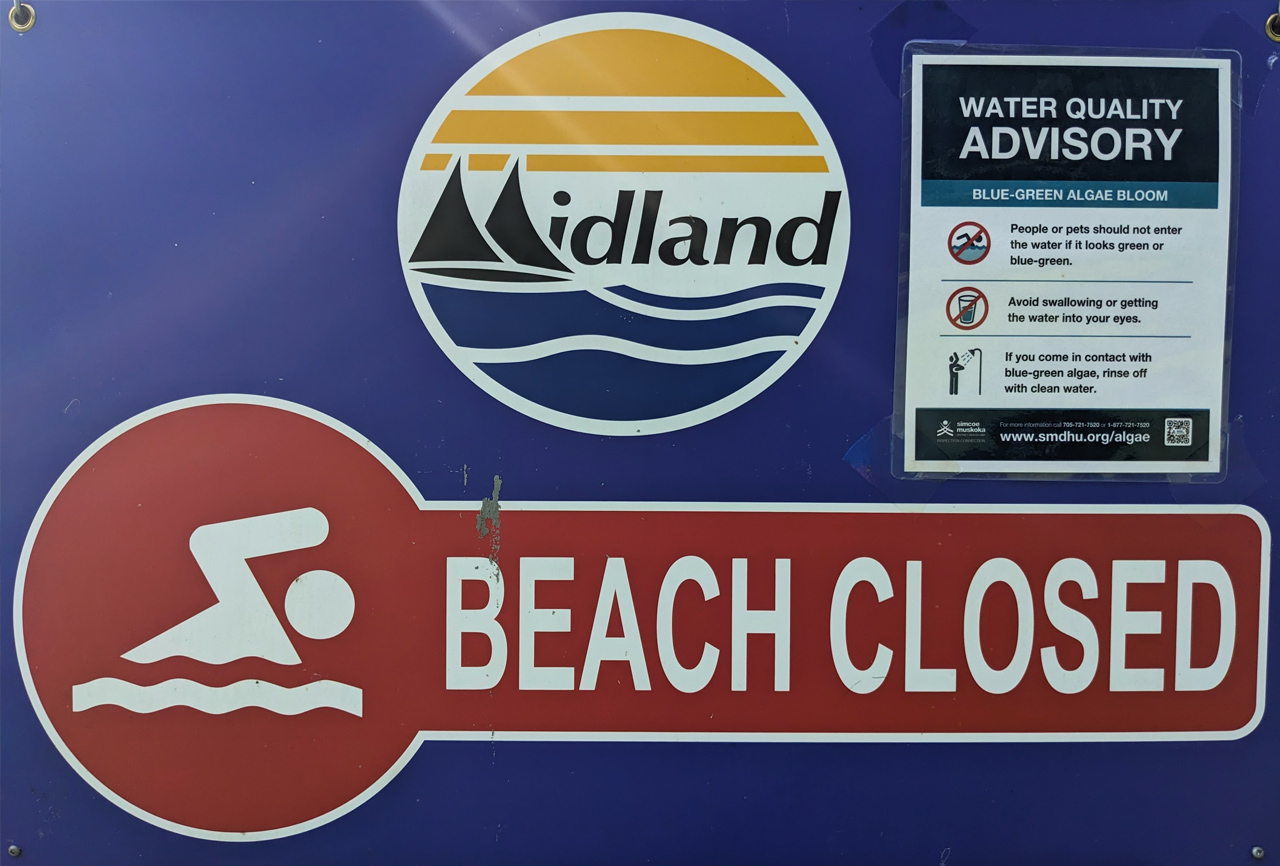
Beach Posting Example
A Water Quality Advisory will be issued by the Health Unit if a bloom is identified to be a public health risk.
It may apply to a whole lake or just a small section depending on severity.
Prevention
Shoreline residents and lake users can take action to reduce and prevent algae blooms by implementing shoreline stewardship practices.
Take these steps to reduce the growth of blue green algae:
- Phosphorus is the key nutrient controlling growth – limiting nutrient inputs will help to control blooms
- Maintain your septic system with regular pump-outs and inspections and reduce septic output by using efficient water fixtures and minimizing water use
- Use phosphate-free detergents, personal care and household cleaning products
- Avoid using fertilizers on lawns, especially fertilizers that contain phosphorus
- Maintain a natural shoreline on lakefront properties
- Reduce runoff by planting or maintaining vegetation in steeply sloped areas and minimize the amount of hard surfaces
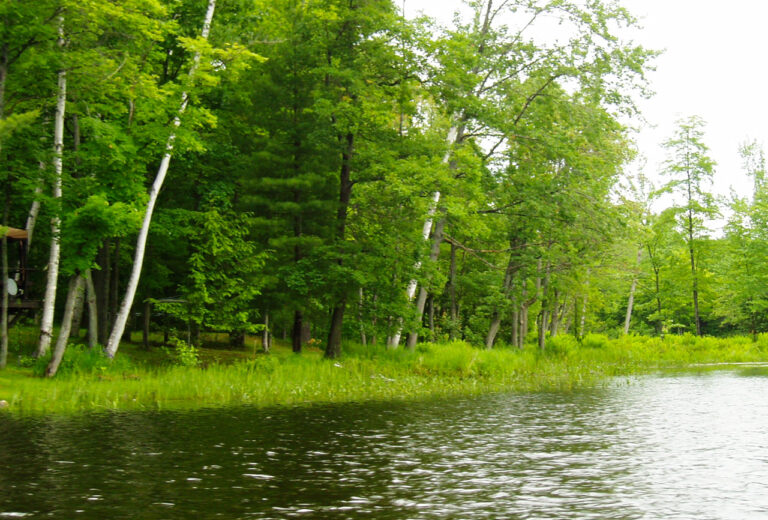
Learn more about the importance of health shorelines and how to protect and improve them in the video below.
Shoreline observers are also encouraged to submit observations of excess algae growth through our citizen science Shore Watch.
Additional Resources:
- Ontario Ministry of Environment, Conservation and Parks – Blue-Green Algae
- Ontario Ministry of Environment, Conservation and Parks – What causes blue-green algal blooms? Video
For more information about algae, contact:
Aisha Chiandet, Water Scientist, Limnologist
achiandet@severnsound.ca
705-534-7283 ext. 204
